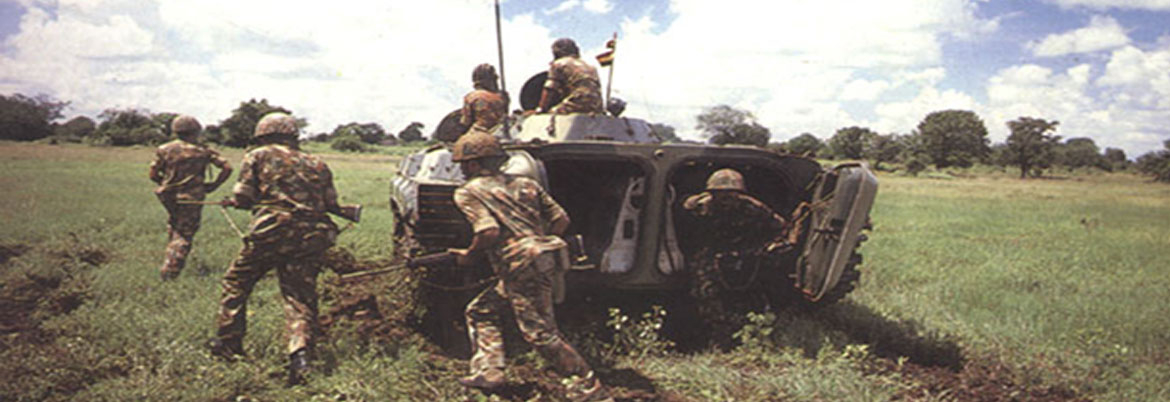
Image Description: An IPKF mechanised infantry section dismounts from a BMP-1 ICV during the Sri Lankan conflict
The surgical strike by Para commandos of the Indian Army, wiping out a significant number of militants in Myanmar, who were involved in killing of 19 army men last week in Manipur has raised euphoria around India and the world. In the midst of all this, my memory goes back to a sad incident that took place in October 1987 at Jaffna University, when we lost 35 of our best commandos in a botched up operation. I had just then started my career in Hyderabad and remember reading a lot about one of the low points in the history of Indian Army; The Jaffna University debacle.
For those who were not born then, let me do a quick recap.
In 1987, the Indian Peace Keeping Force (IPKF) was sent to play a buffer between a marauding Liberation Tigers of Tamil Eelam (LTTE) and a battered Sri Lankan Army. The IPKF, which composed of different units of the Indian Army was told that they needed to disarm LTTE by use of force and secure the town of Jaffna. It was the opening gambit of Operation Pawan, which was messed by the political leadership under Rajiv Gandhi, a greenhorn in the minefield of international politics.
The fatal operation was mounted on the midnight of 12 October 1987, as a fast heliborne assault involving Mi-8's, Para Commandos and a contingent of the Sikh Light Infantry. The aim of the first ever operation of the IPKF was to capture the Tiger leaders including Velupillai Prabhakaran, intelligence chief Mahattaya, as well as LTTE local commanders at the Jaffna University building, which had then served as the Tactical Headquarters of the LTTE.
A total of four helicopters were supposed to be used flying in from the Palali airfield, with a hundred and twenty commandos from 10 Para and 360 regular troops from the 13th Sikh Light Infantry. The whole operation, from start to finish was expected to last ninety minutes. As night set in, the first helicopter dropped the commandoes onto the football field in the University and ran into an intense firefight from heavily armed LTTE fighters. The second helicopter left Palali Airfield (about four minutes flying time from the drop-zone at the University) and on approaching the University, the pilots reported intense ground fire and were forced to return to Palali. On knowing that their men were being mowed down, an IPKF unit tried to use a ground force to make their way to the University but LTTE had mined the approach road making it impossible to move ahead.
The LTTE knew that the Indian paratroopers were coming, having intercepted Indian radio communications and were prepared to the hilt. They moved men and guns into the University, especially near the drop point: the football field. The brave Sikh LI detachment of twenty-nine troops, along with six para-commandos, fought to the last man, refusing to surrender. The Jaffna University massacre was the turning point in the relations between LTTE and the Indian Government, which had once trained and armed Velupillai Prabhakaran and his fledgling army.
It was 1986 and I was a student of Hotel Management at Taramani in Chennai. During my visit to Indira Nagar near Adyar, we were often shooed away from a massive bungalow which was guarded by soldiers of the Indian Army. It was later that I was told that the building housed Velupillai Prabhakaran who was strategically being groomed by the Indian government to counter the Sinhalese dominated government. But like Bhindranwale, who was promoted by Indira Gandhi to take on SGPC, Prabhakaran too turned against the Indian Government with disastrous consequences.
Despite the Jaffna University debacle, the IPKF wrested control of the Jaffna Peninsula from LTTE, something that even the Sri Lankan army could not do in its long war with the Tigers. Supported by Army tanks, helicopter gunships and heavy artillery, the IPKF in a brutal battle routed the LTTE. The Indians lost around 214 soldiers in this operation, which lasted for three full weeks. As army veterans would recall, Rajiv Gandhi did not know what he was getting into when he authorized the IPKF operation. While his intentions were good, he did not know how to navigate the quicksand of Srilankan politics and more importantly underestimated the strength and resolve of the LTTE fighters.
The IPKF was literally fighting with one hand tied behind their backs, as the Congress party did not wish to alienate the people of Tamil Nadu who were drifting away into the world of Dravidian politics. IPKF army commanders on the ground had been told not to be too aggressive with the LTTE, but at the same time were told to take out Prabhakaran and the rest of LTTE leadership – alive!! That was easier said than done, and the final outcome was a lesson about not getting involved in something which you have no idea about. In totality, in the three years they were in Sri Lanka, the IPKF lost 1,200 of its officers and soldiers while over 3,000 were wounded. The LTTE’s toll was even higher with more than 8000 fighters either killed or wounded. It took the Sri Lankan Army many years to finally rout the LTTE but everyone paid a bloody price for it – The Sri Lankan Army, LTTE, IPKF, and to forget, Indian Prime Minister Rajiv Gandhi himself lost his life in that fiasco.
Thankfully, the Special forces of 21st Para regiment on Tuesday laid to rest the ghosts of Jaffna University with a surgical strike when the militants in Myanmar were least expecting it. It takes decisive political leadership which Prime Minister Modi exhibited in authorizing the operation. Like the legendary Sun Tzu, had been quoted in his classic, The Art of War: “Attack the enemy where he is unprepared, appear where you are not expected.”
By Suresh Kochattil
No comments:
Post a Comment